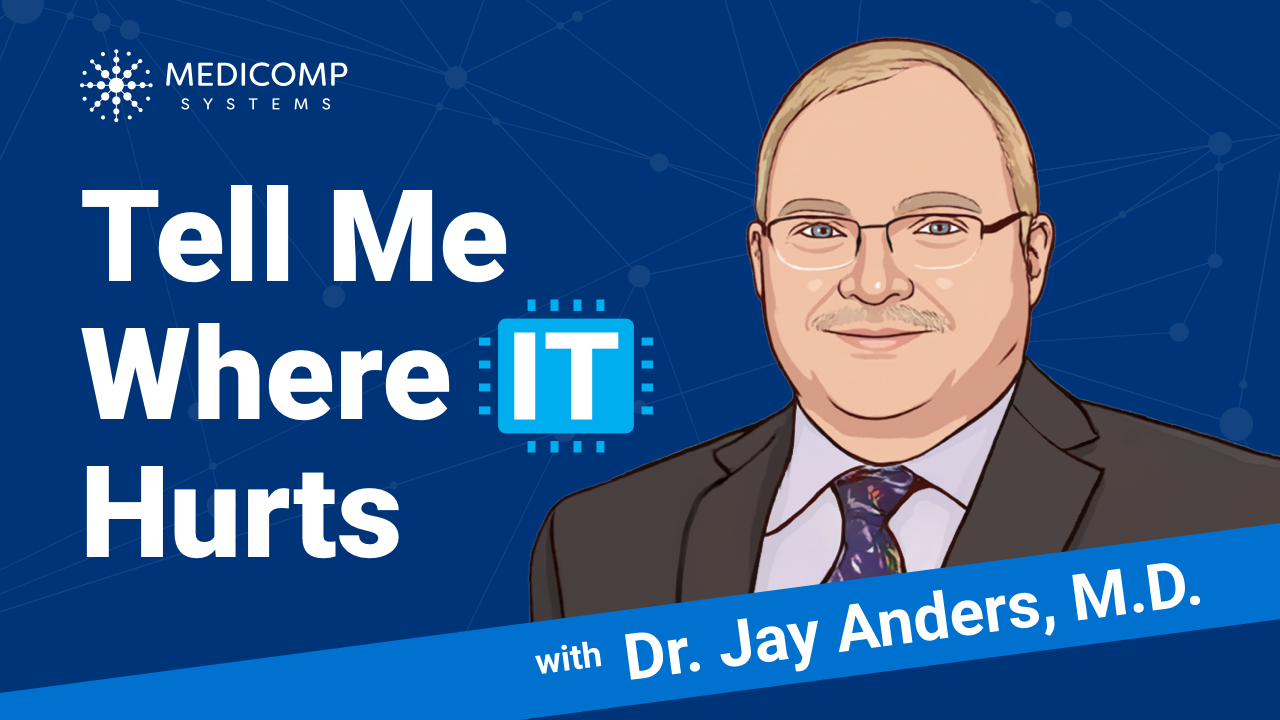In recognition of Florence Nightingales’ birthday and International Nurses Day, the latest episode of Tell Me Where IT Hurts highlights some of the IT-related challenges that nurses face and honors the collaboration that nurses provide in the delivery of medical care.
Listen to the full podcast here or subscribe to Tell Me Where IT Hurts on HealthCareNow Radio Network or wherever you get your podcasts.
In Episode 3 of Tell Me Where IT Hurts, host Jay Anders, MD, chats with Charles Boicey, MS, RN-BC, chief innovation officer of the healthcare advanced data management and analytics technology platform Clearsense and former president of the American Nursing Informatics Association. Boicey and Dr. Anders discuss the changing landscape for nurses and all medical professionals, how the pandemic has exacerbated clinician burnout, how EHRs and documentation burdens add to nurse struggles, and how new artificial intelligence (AI) and machine learning technologies are making data more valuable to nurses, patients and other health professionals.
Clinician burnout
Dr. Anders and Boicey agree that the pandemic created especially difficult working conditions for nurses and physicians, which have worsened clinician burnout. EHR usability issues have added to clinician burdens, in part because most systems were originally designed to meet financial and billing requirements rather than the needs of clinicians. Institutional requirements for quality and compliance reporting add to nurse burdens and aren’t necessarily relevant to patient care.
EHR struggles
Healthcare organizations seeking to improve EHR usability are often constrained by the limitations of existing architecture. However, as organizations work to optimize existing systems for nurse users, they must give nurses of all hierarchical levels a seat at the design table. By involving nurses, their perspectives are better understood so practice needs can be addressed.
Dr. Anders and Boicey also note that EMRs don’t give much back to the provider in terms of improving patient care. EMRs contain data that provides situational awareness about what has happened with a patient now and in the recent past, but nurses could also benefit from technology that perceives small changes in a patient’s condition and alerts clinicians of potential complications, such as sepsis. Nurses need tools that automate the capture of quality measures and similar details so they can focus on caring for patients.
Clearsense
Boicey provides an overview of the Clearsense platform, which works to address deficiencies in the quality of clinical data to make it more useful to clinicians and more usable for analytics, reporting and forecasting needs. Clearsense uses machine learning to take data from its raw state, correct deficiencies, and put the data into curated usable information. From a nursing perspective, the cleaned data can help clinicians deliver the proper care at the proper time. The platform quickly collates and assesses data and produces cognitive triggers within workflows to help nursing staff make clinical decisions.
Bonus: 21st Century CURES Act
In closing their conversation, Dr. Anders and Boicey reflect on the 21st Century CURES Act and its anticipated impact on interoperability, open notes, transparency, and data blocking. Tune into the podcast here to listen to what they had to say on this topic.
